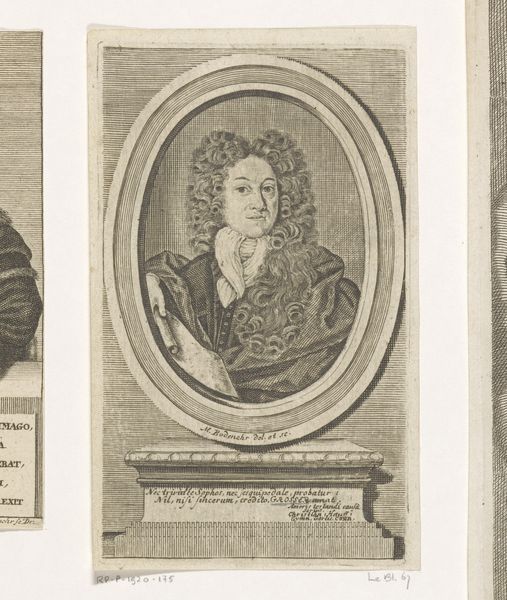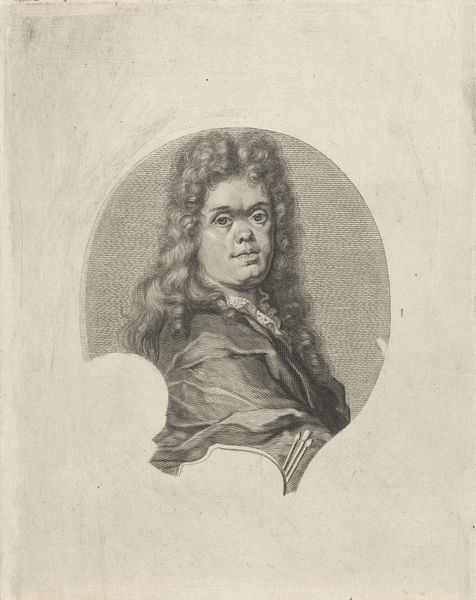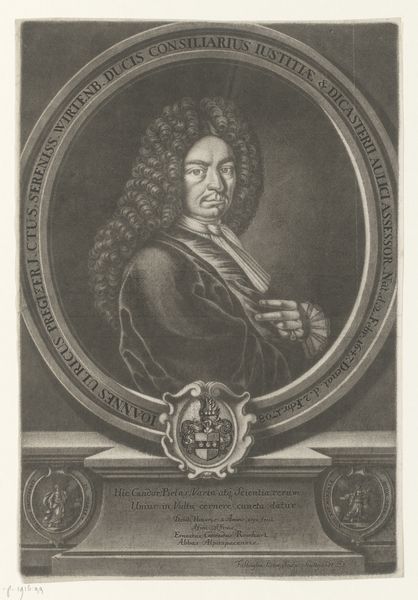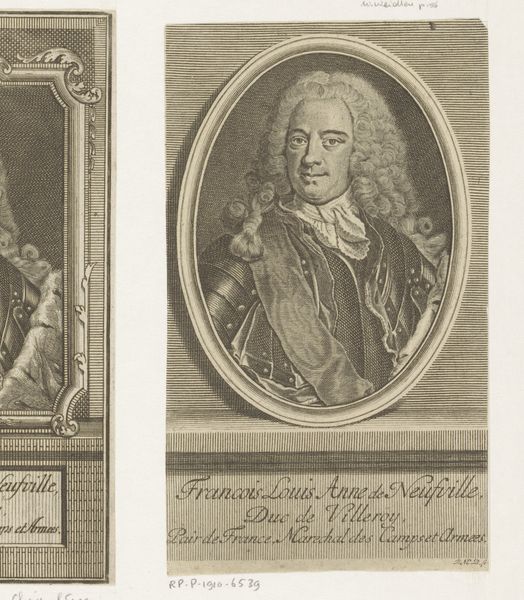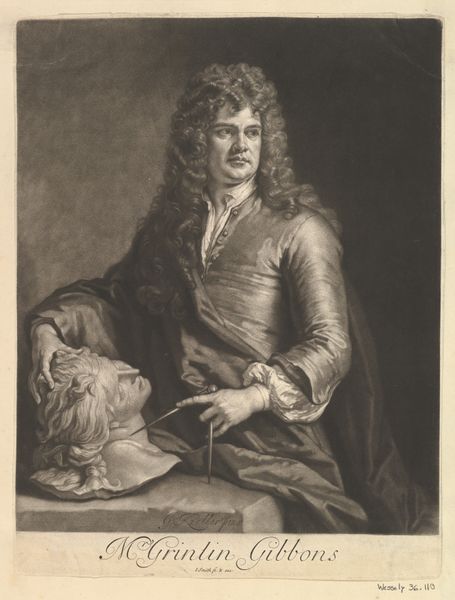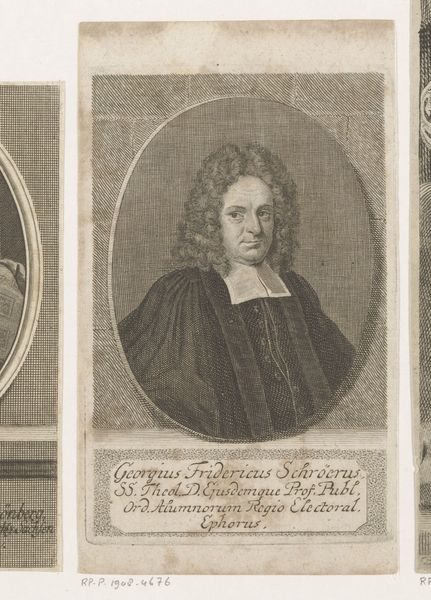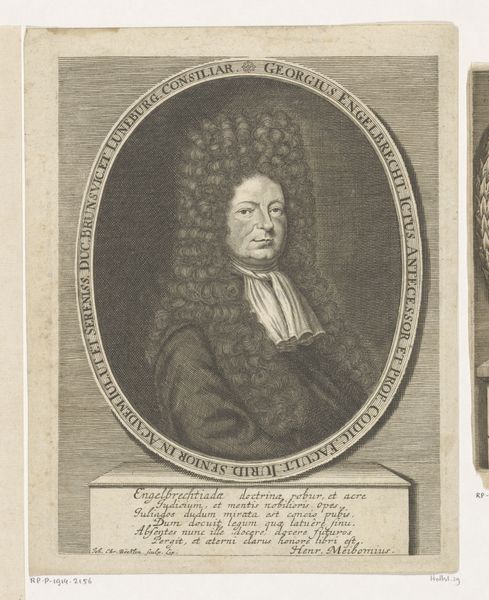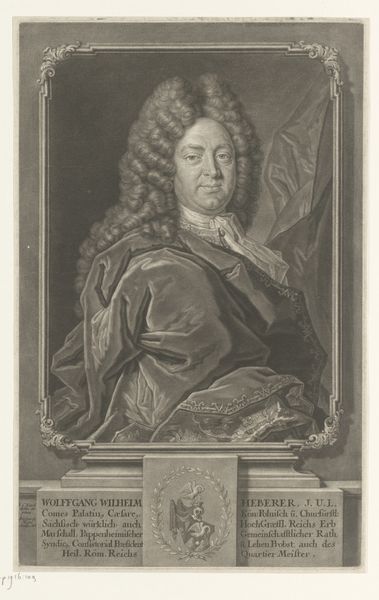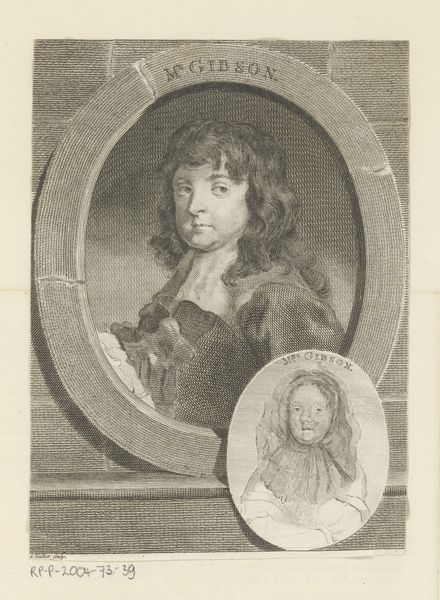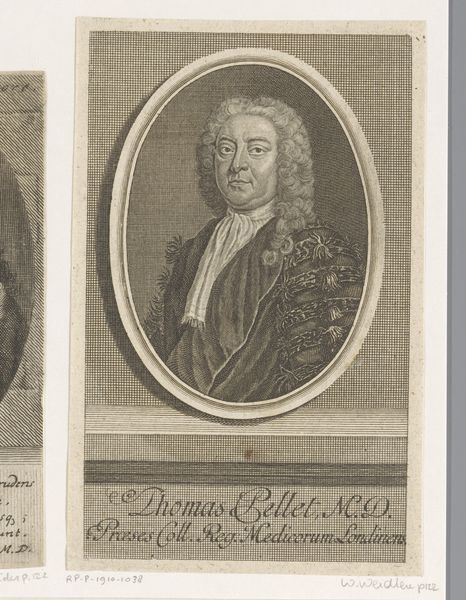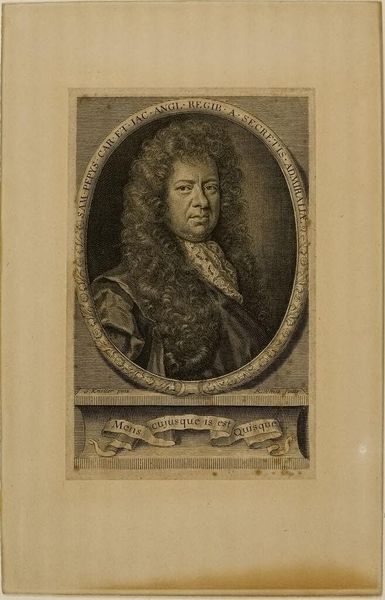
painting, oil-paint
#
portrait
#
baroque
#
painting
#
oil-paint
#
sculpture
#
academic-art
Dimensions: height 11 cm, width 9 cm
Copyright: Rijks Museum: Open Domain
Editor: This is a painting titled "Portrait of Adriaan van der Vliet (1707-77), Poet in Rotterdam," made with oil paint sometime between 1732 and 1771 by Dionys van Nijmegen. I find the subject's gaze and pose rather commanding. How do you interpret this work? Curator: It’s fascinating how portraiture in this period, and especially portraits of poets, contributed to constructing ideals of masculinity and intellectualism. The poet's composed posture and direct gaze reinforce his authority and position in society, yes? Think of how access to art was determined by gender, class, race and so forth. What narrative do you think the painter is trying to portray, and for whom? Editor: I guess it's trying to show Van der Vliet as educated and sophisticated, reflecting the values of the Dutch elite at the time, perhaps to elevate his status. I hadn’t considered it in the context of class privilege and power dynamics. Curator: Exactly. The very act of commissioning a portrait like this was a statement of social standing and a bid for enduring recognition, often reinforcing existing power structures. Think about the art world as a social system that reflects and reinforces cultural norms. Now, considering Van der Vliet's role as a poet, how might his art have engaged with or challenged these norms? Editor: I'm not sure, but it's making me wonder if his poetry, and his portrayal in art, upheld those existing societal power dynamics or questioned them in some way. I'll need to research his poetry! Thanks, I never thought to approach it from this angle. Curator: Keep digging. Connecting art to its social and political context is always rewarding.
Comments
No comments
Be the first to comment and join the conversation on the ultimate creative platform.
